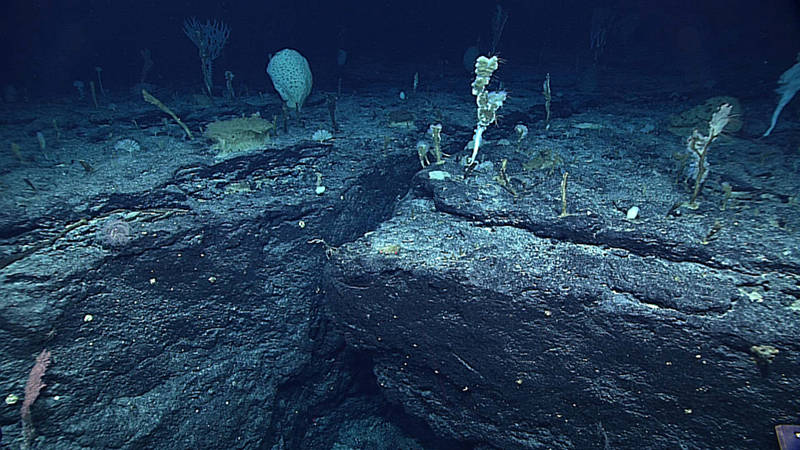
Throughout the dive at Guyot Ridge, D2 observed a diversity of deep-sea corals and sponges. Image courtesy of the NOAA Office of Ocean Exploration and Research, 2015 Hohonu Moana. Download larger version (jpg, 1.7 MB).

Throughout the dive at Guyot Ridge, D2 observed a diversity of deep-sea corals and sponges. Image courtesy of the NOAA Office of Ocean Exploration and Research, 2015 Hohonu Moana. Download larger version (jpg, 1.7 MB).
Today’s dive explored a guyot ridge along the northwest end of the Karin Seamounts. We had a very a successful dive, returning with two rocks and one chrysogorgiid octocoral after conducting five midwater transects during the ascent of the ROVs. The dive began on the slope about 240 meters below the plateau in an area of high coral diversity with at least seven different species of octocorals. The bottom was steep and very little sediment was observed. Corals and sponges were regularly observed as we climbed the steep slope, along with many associates. We estimate at least seven different morphotypes of sponges were documented during the dive. Other interesting observations included several swimming ribbon worms; a Swima polychaete; unusual crinoids; and several rocks with large barnacles. Four individual fish were seen, each of a different family – a rattail, cusk eel, cutthroat eel, and a codling. As on most dives during this expedition, exposed hard bottom that appeared heavily encrusted with manganese was the norm. Some of the terrain was very steep with pinnacles. The edge of the plateau showed a sharp transition from corals to a high abundance of sponges, including at least seven genera on the top. Midwater transects documented several jellyfish and two mid-water fish.